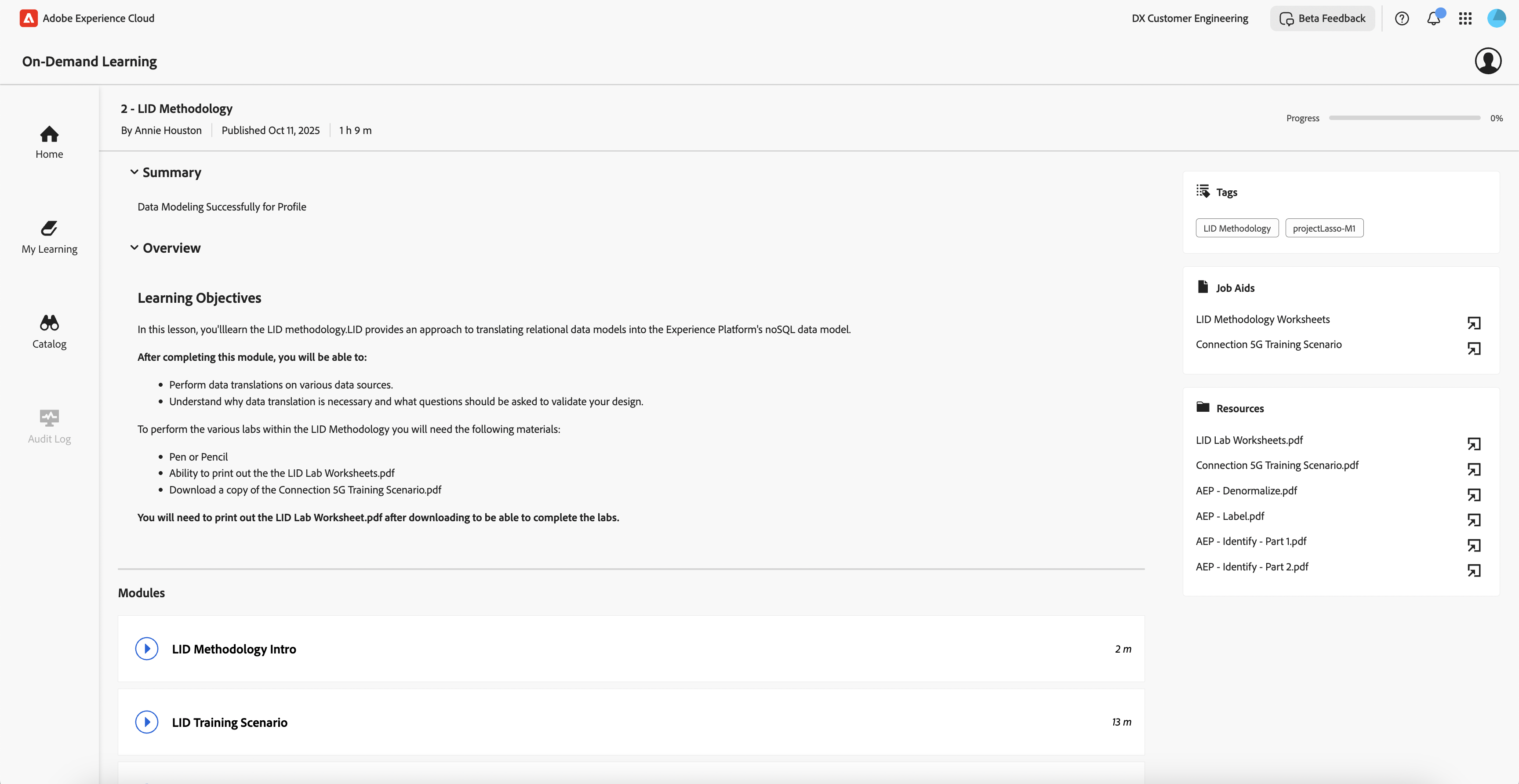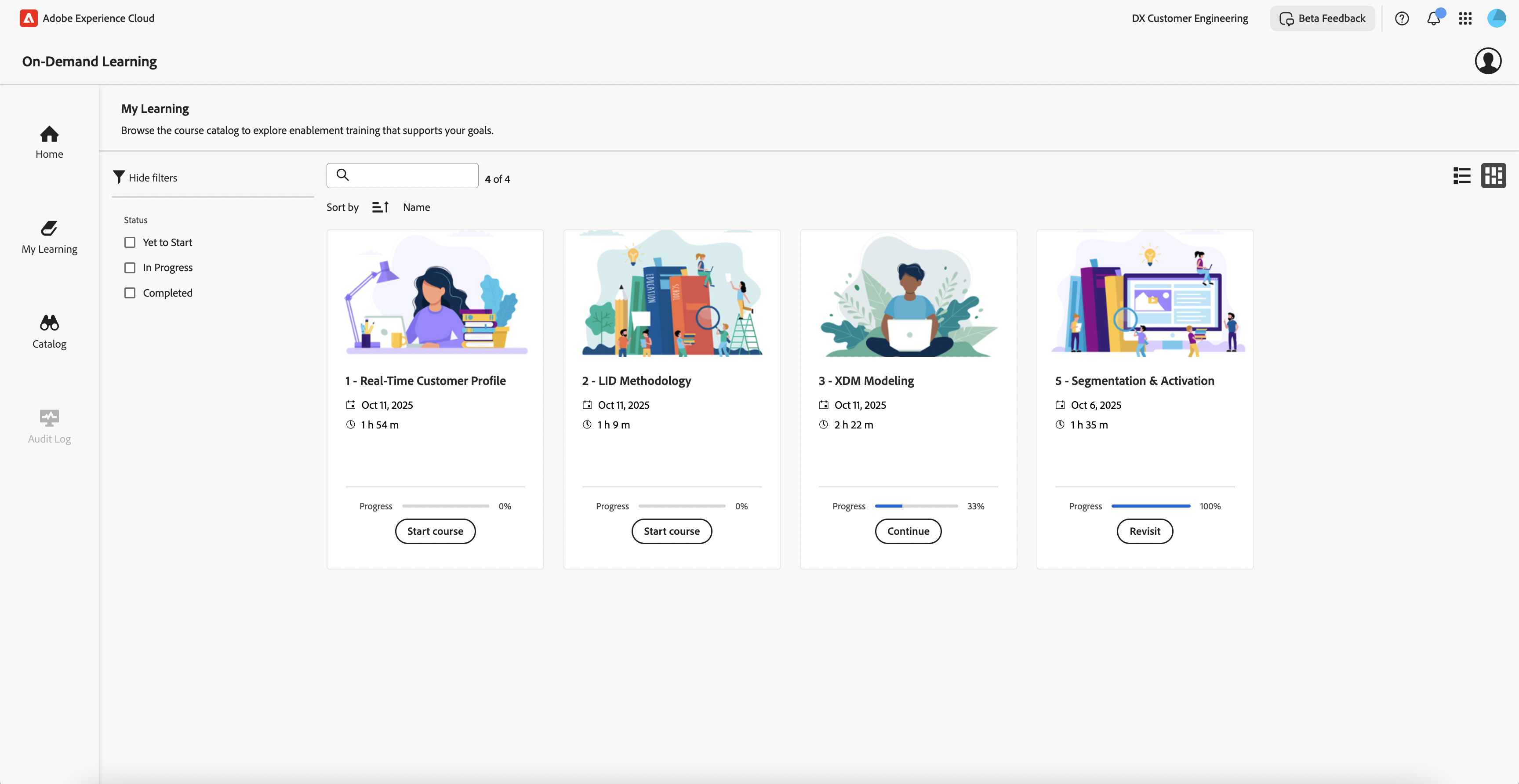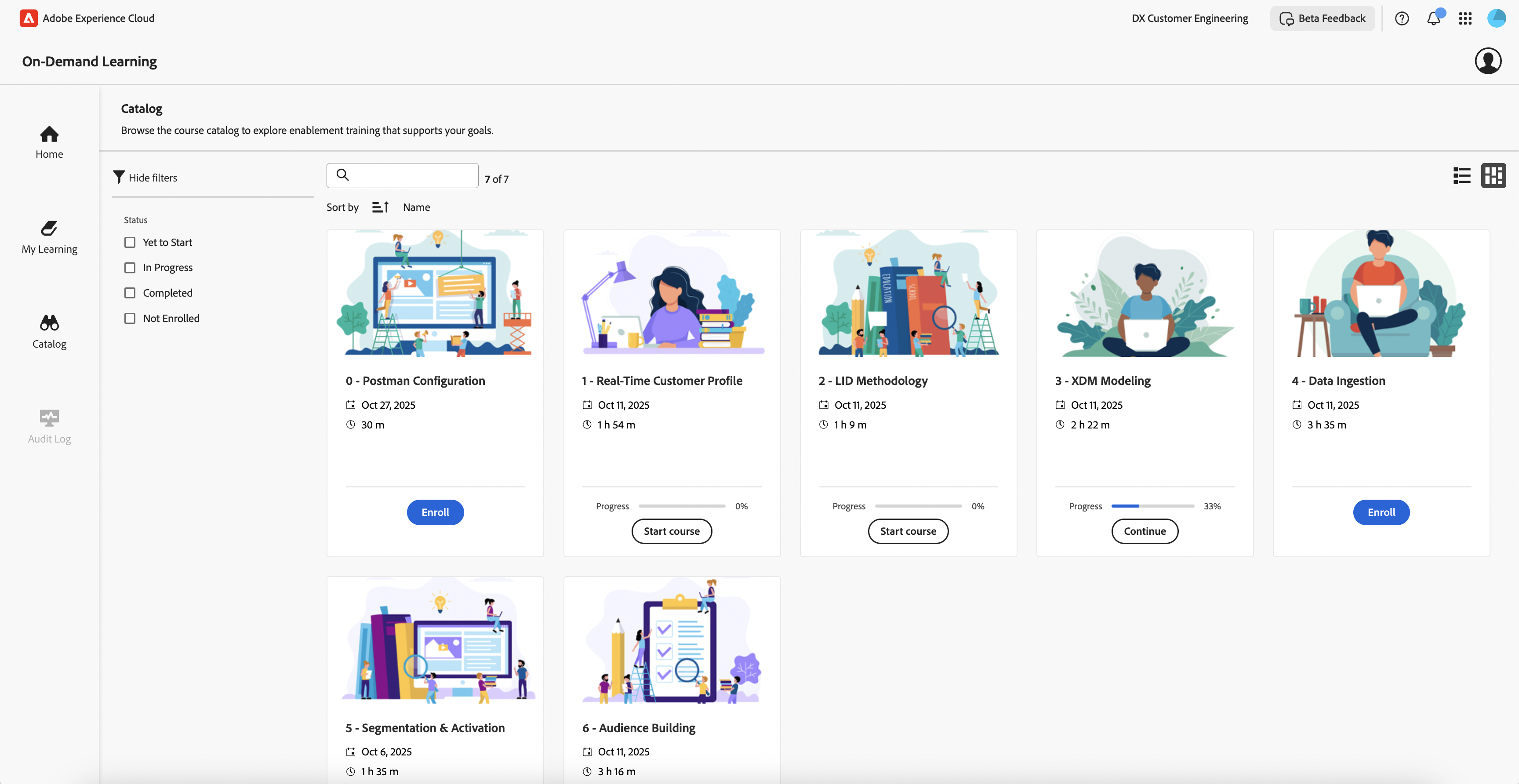Project Lasso (On-Demand Learning 2.0)
A productized, self-paced implementation of the Developer Enablement Program.

Overview
Adobe Experience Platform customers and partners are trained through the Developer Enablement Program, which involves deploying learning content across multiple sandboxes and conducting in-person training.Project Lasso aims to provide this training in a virtual and scalable manner. Equipped with their own learning environment (an Experience Platform sandbox), customers are encouraged to explore the product and complete self-paced enablement in a no-risk environment with step-by-step guidance, templates, and practice files to accelerate action and learning.
Goals
- Provide a scalable, digitized DEP offering with consistent customer experience (impact/feedback, rating, NPS) in lieu of in-person sessions
- Provide training to technical roles (developer, architect)
- 150 users granted access to learning environments per quarter
- Percentage of lab environments requested and not used is less than 20%
Scope
June 2025 - CurrentTools
React, TypeScript, React Spectrum (React implementation of Adobe’s design system), Unified Shell (Adobe’s UI framework for internal apps), HTML/CSSRole
UX Designer and Developer | Wireframes, Prototyping, UI/UX Research, Front-End Development and API OptimizationI served as the sole UX designer and developer on a 13-person team that included Product Management, Engineering, Technical Marketing, Customer Onboarding, and other Sponsors. The Customer Engineering team primarily managed the ‘Environment & Data’ section, which involved developing the environment creation/deployment and learner experience.

Exploration
Personas
- Admin - manages sandbox for a learner
- Learner - AEP customers with a technical background (developers, architects, etc.)
- Author
- Course content - creates lecture materials
- Lab guide - creates hands-on exercise that will be completed in the learner's environment
- Lab pack - creates assets that will be deployed to the learning environment
Past Bootcamps
I watched recordings of past bootcamps to better understand how attendees learned content, asked for help, and got feedback.Learning Gaps/Questions
- How do we track if a learner has completed the lab guide?
- How do we know if a learner completed the steps of the lab guide correctly?
- How do we structure the learning content for the bootcamp?
Technology Stack
- AEP - User-specific sandbox in a Learner IMS org
- Adobe Learning Manager (ALM) - used to house and serve course content/learner progress
- Unified Shell - Experience Platform's UI framework
Competitive Analysis
We explored similar learning experiences within Adobe such as Adobe Learning Manager, Experience League, and Adobe Digital University. Project Lasso is differentiated from these other offerings as it provides hands-on learning environments that are unique to each individual developer/architect.Adobe Learning Manager experience
Adobe Digital University experience
Design Process: Version 1

Detailed user flow from user registration to environment de-activation
For milestone 1, the focus was to design and build an Admin Dashboard for the Product team to create and extend sandboxes (packaged with AEP Foundations objects) across two Learner IMS orgs. Lab guides and lecture videos would be hosted on a previous app we built called On-Demand Learning, which will be modified to exclude self-service environment requests.

Admin UI requirements for M1

Image Caption
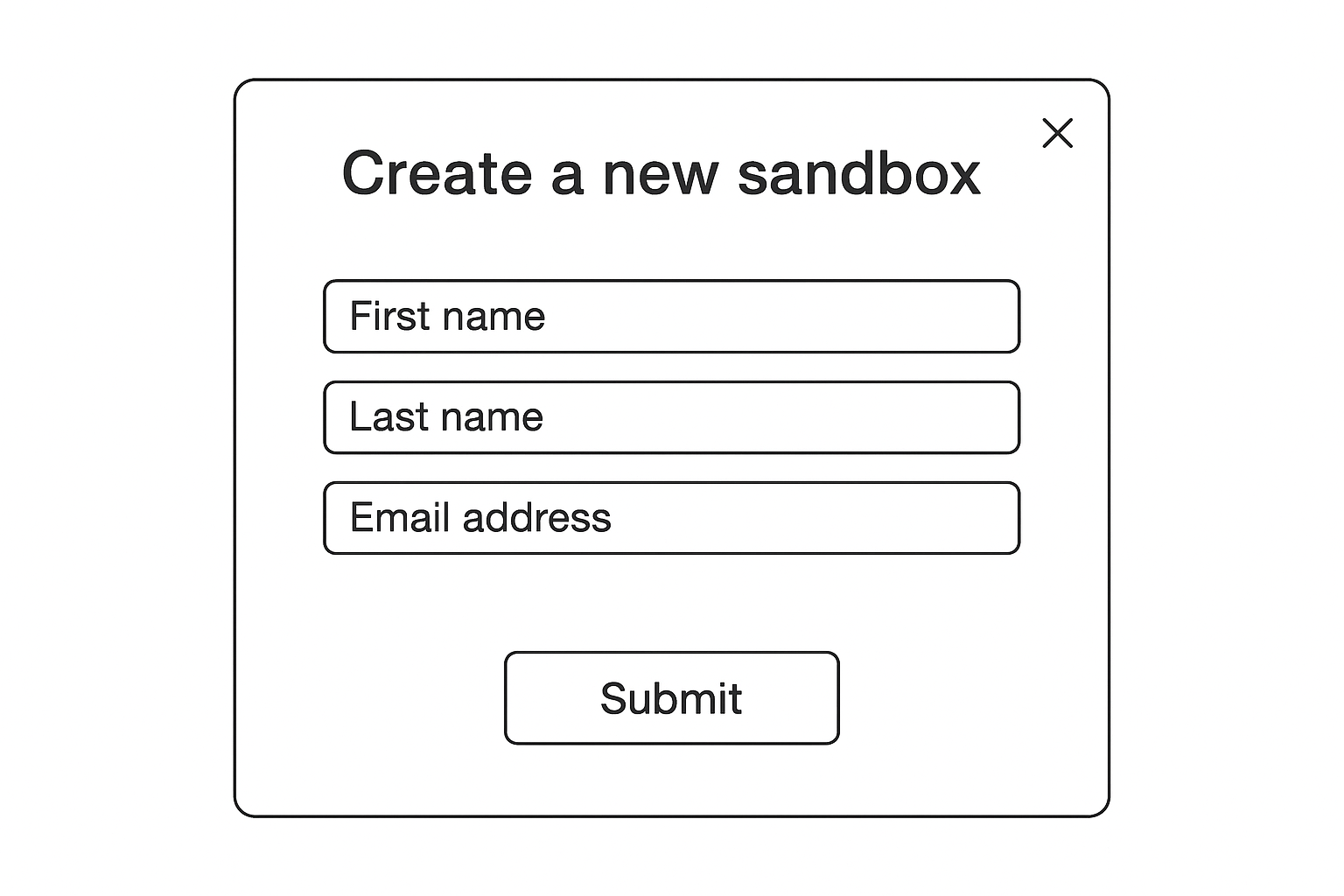
Image Caption
Wireframe for the Admin UI
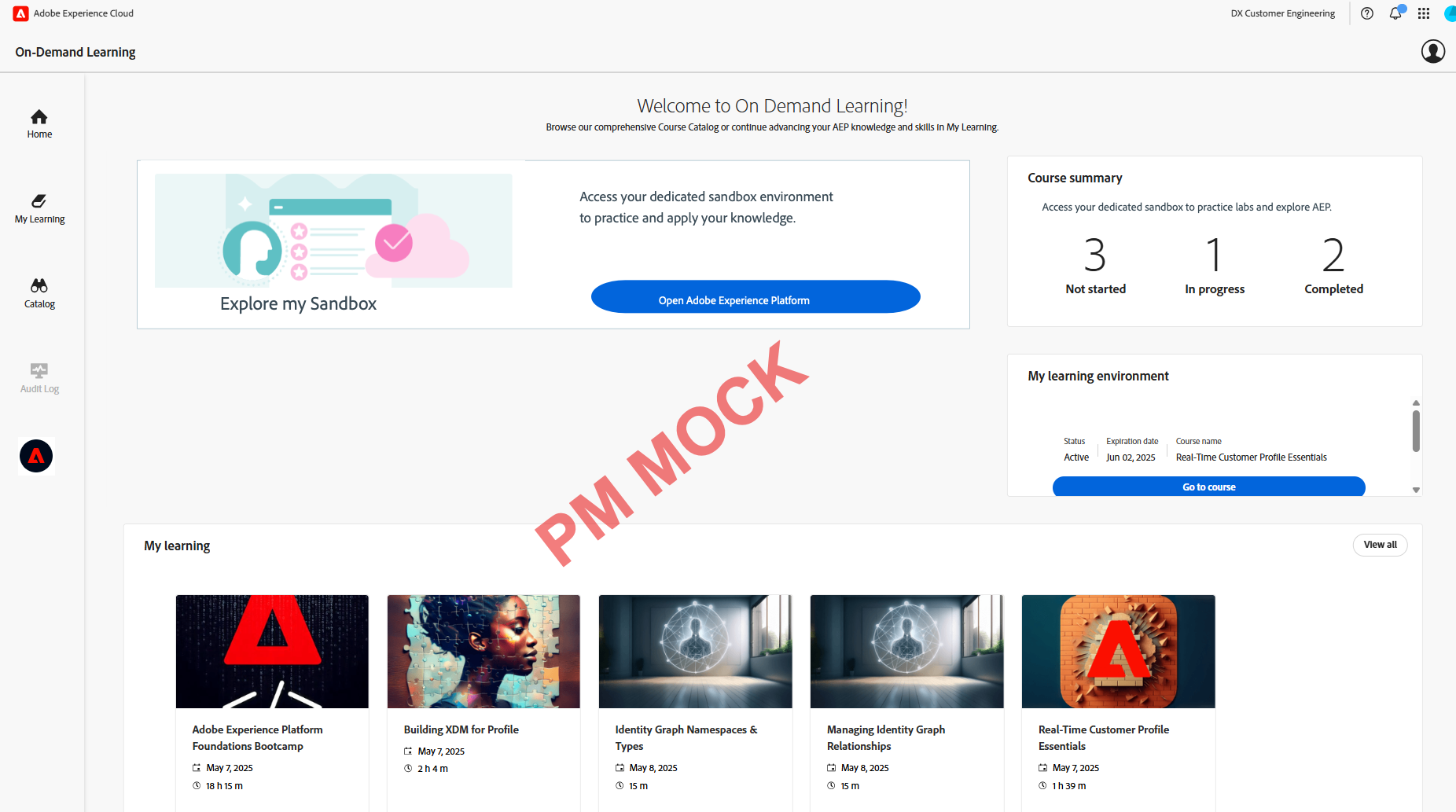
Image Caption
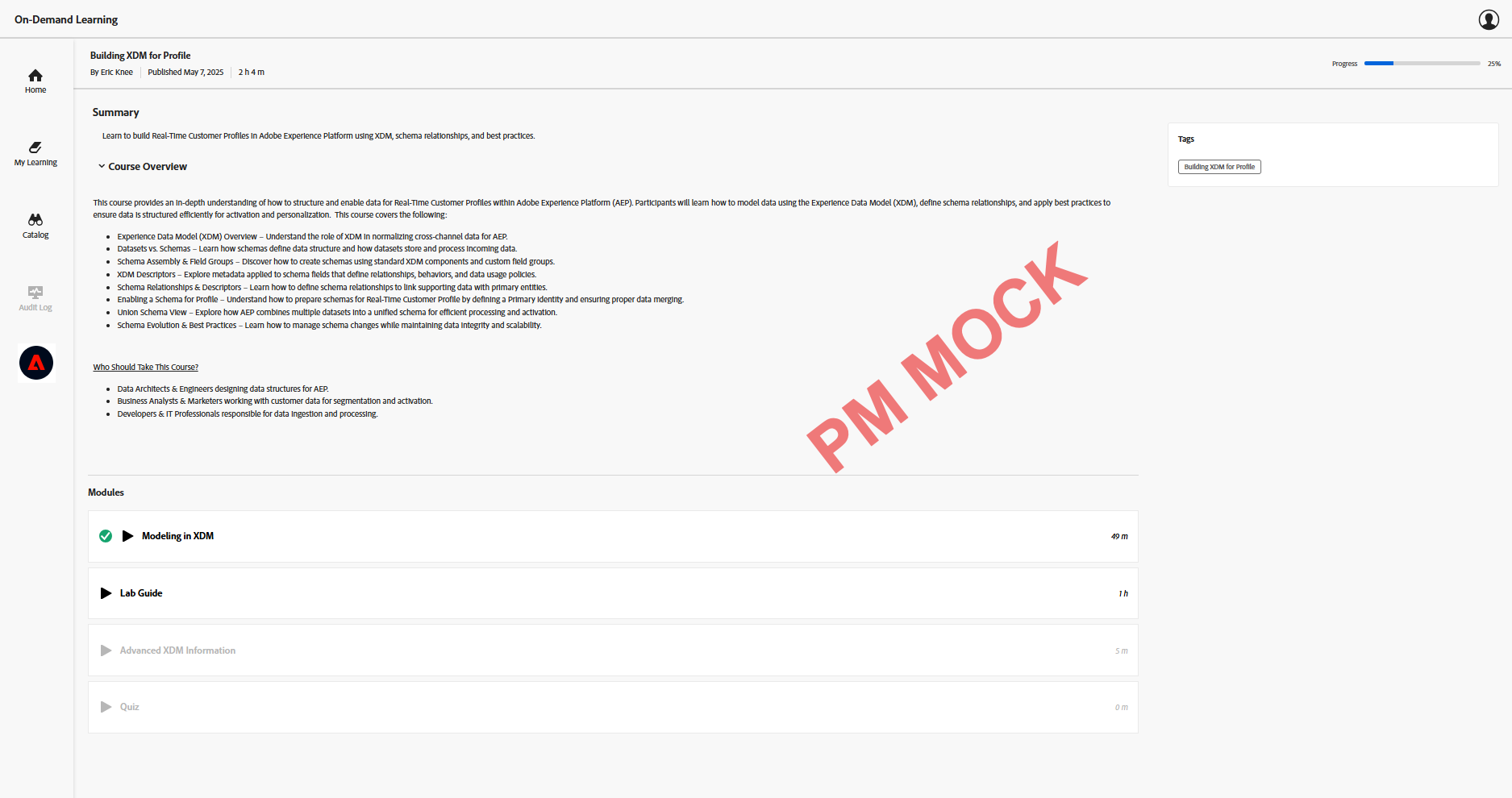
Image Caption
Mocks for the revised On-Demand Learning experience
Implementation: Version 1
I re-purposed an existing application in Unified Shell for the Admin Dashboard experience, which helped save time given the tight timeline and shifting requirements. I built the UI framework using React Spectrum components and collaborated with the backend team to refine API contracts/data models to support the environments. The biggest change between Version 1 and Version 2 of the Admin Dashboard implementation was allowing bulk sandbox requests via an uploaded csv file. This enables Product to upload responses from their request form instead of requesting users individually.
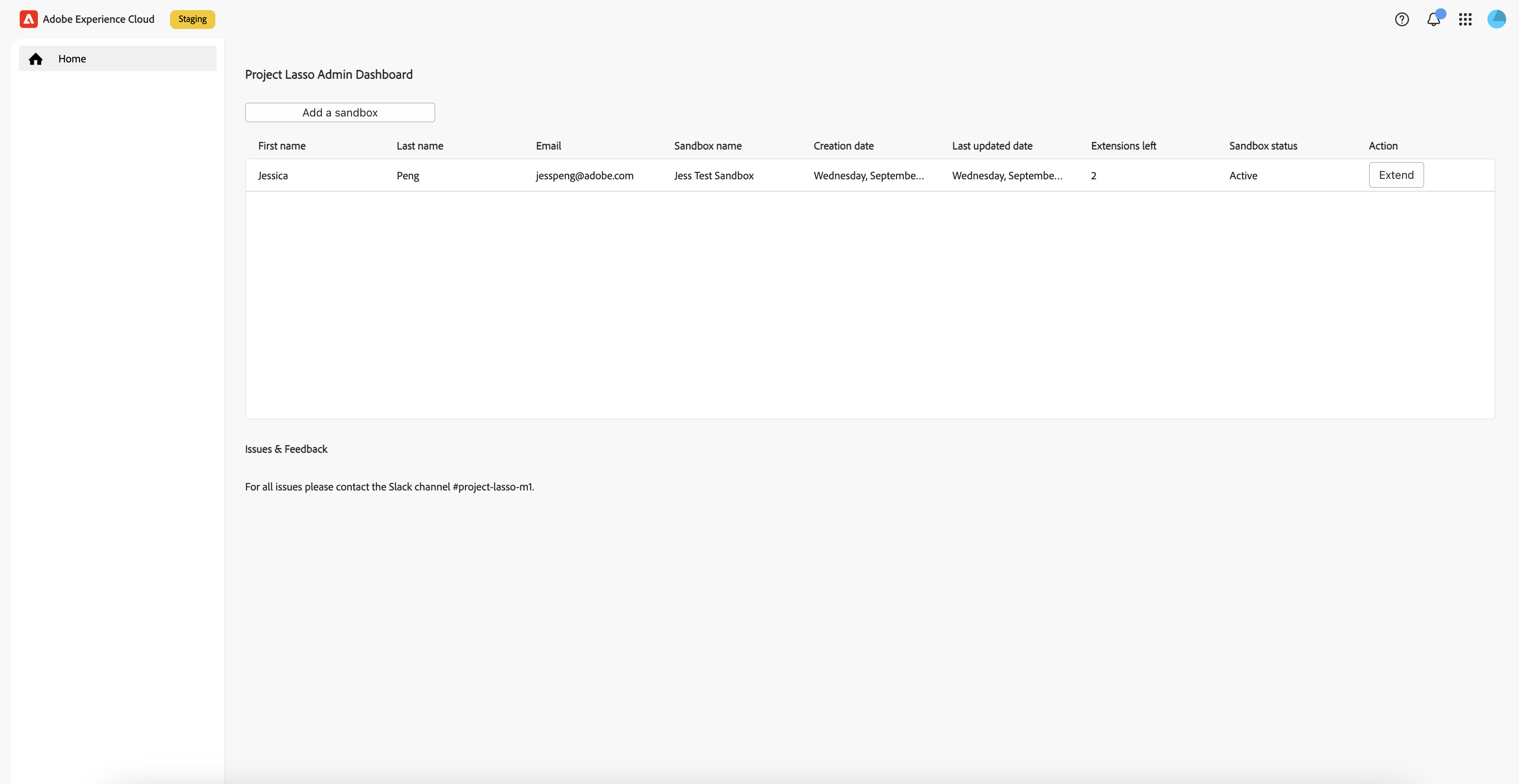
Image Caption
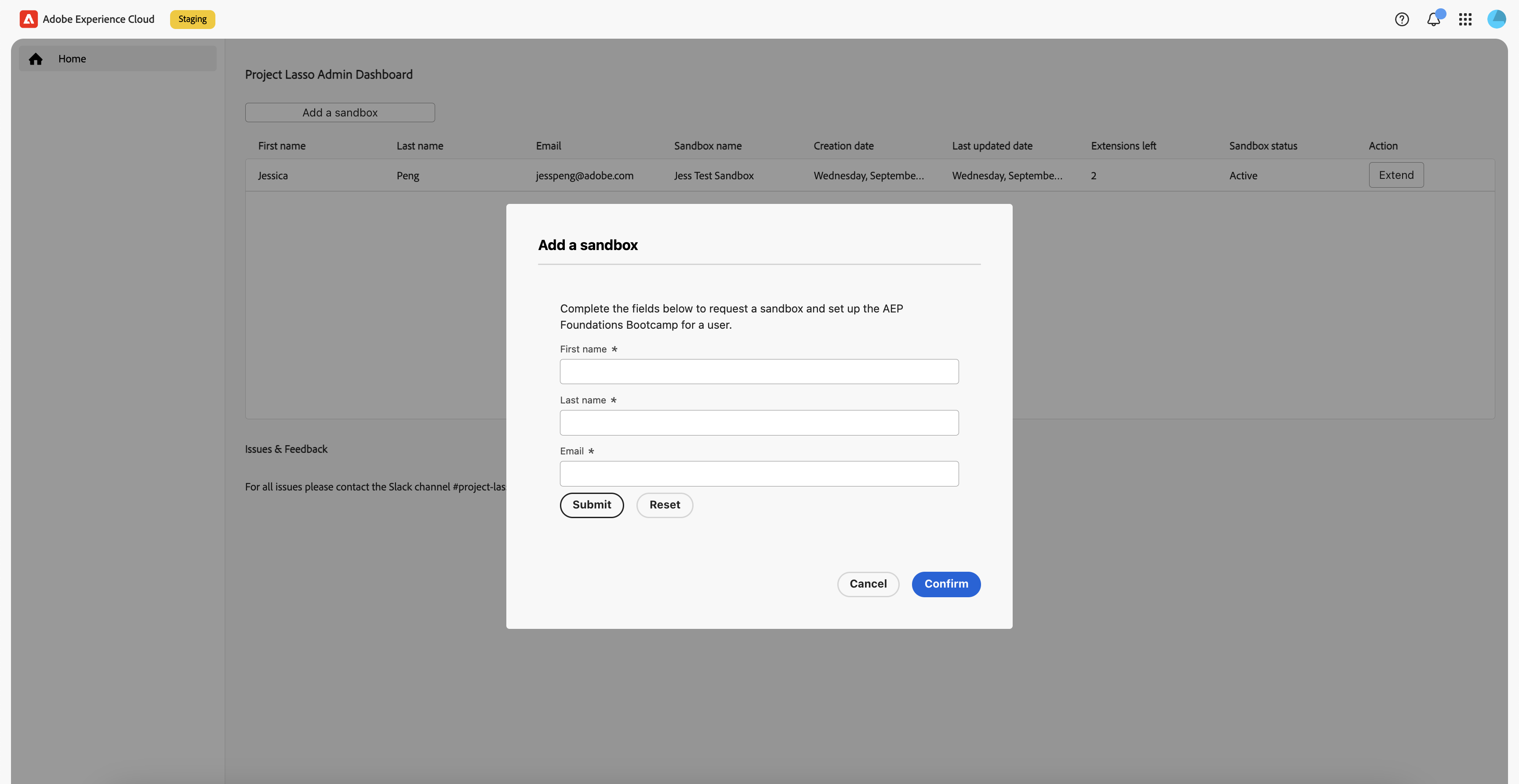
Image Caption
Admin Dashboard Version 1 implementation

Image Caption
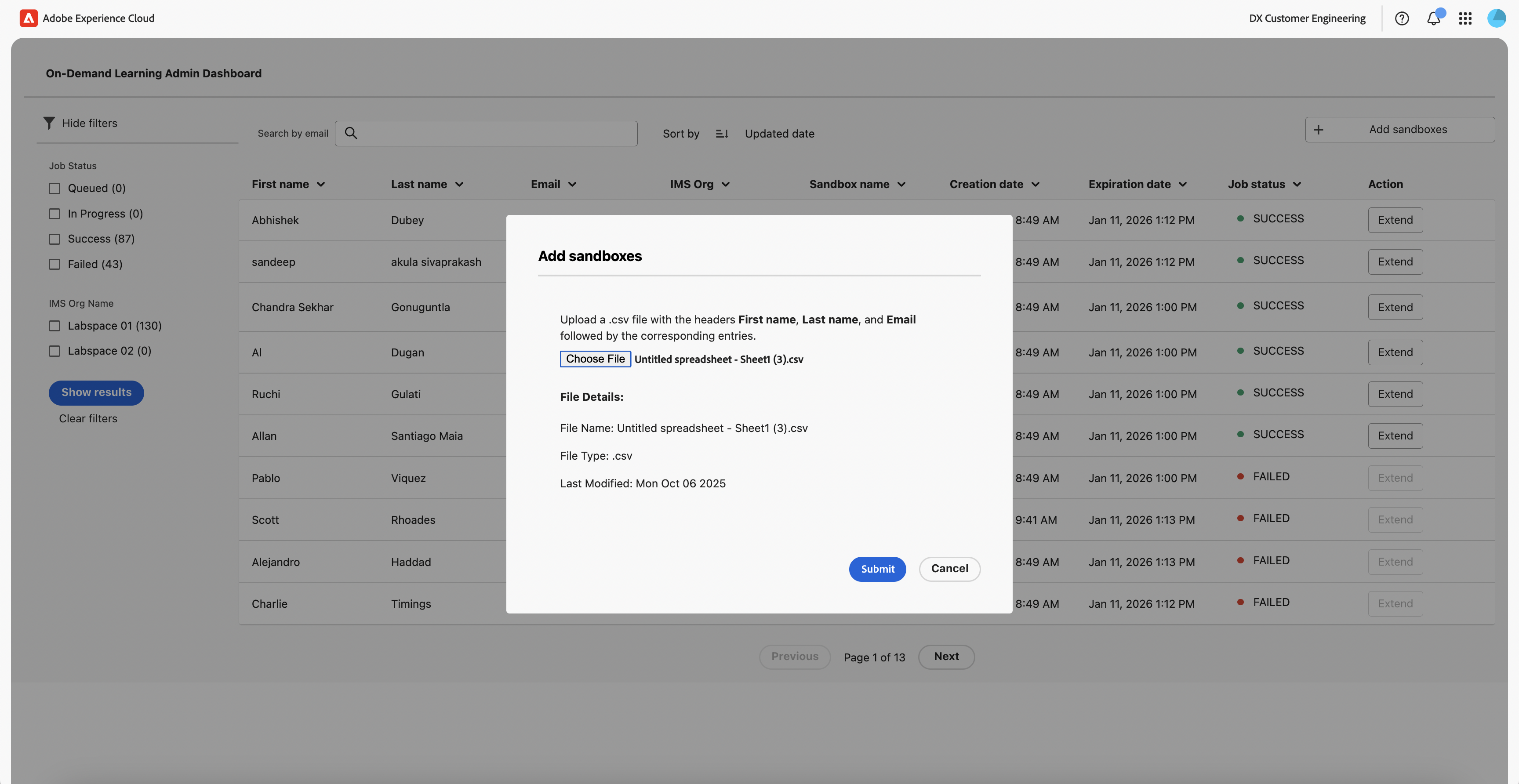
Image Caption
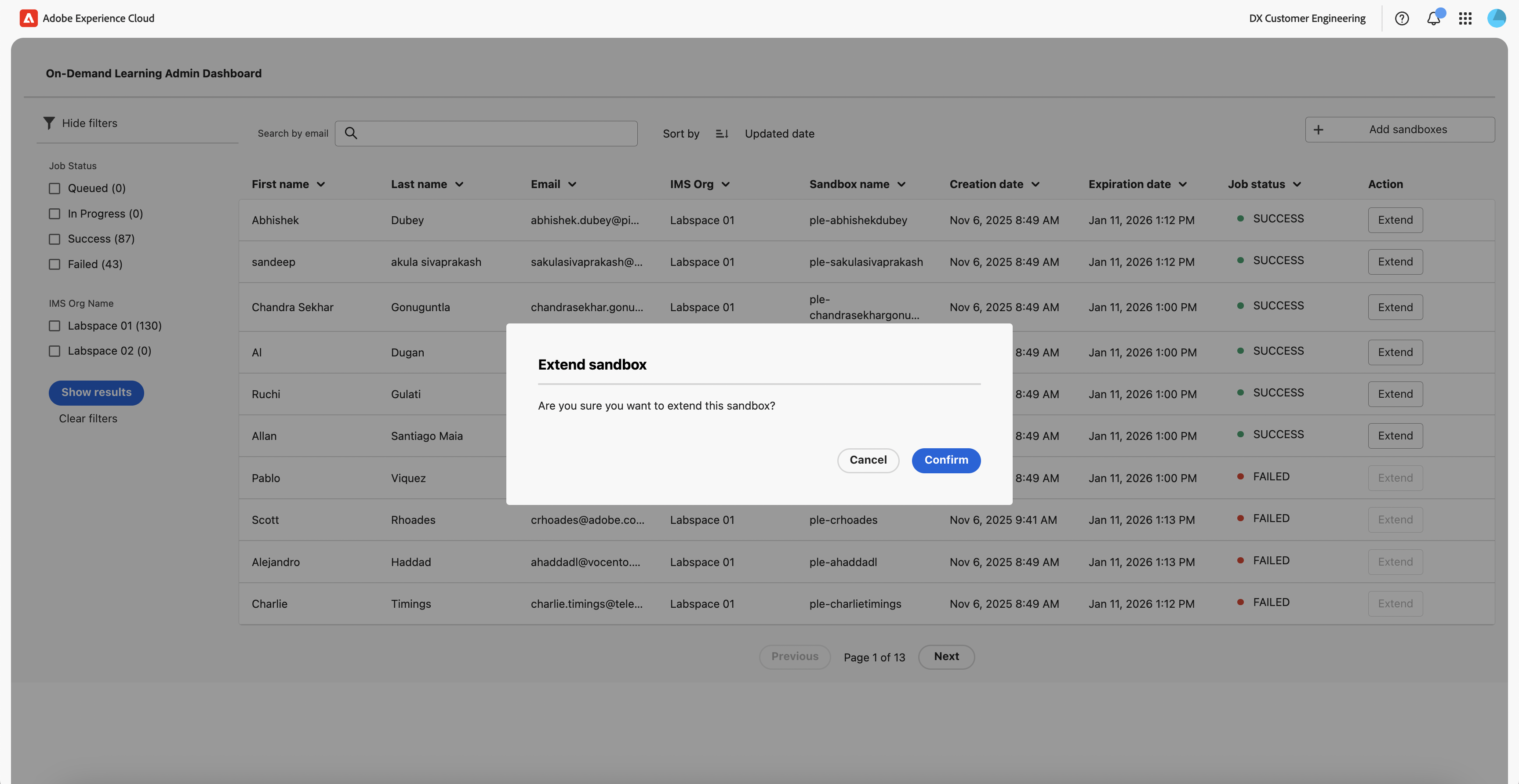
Image Caption
Admin Dashboard Version 2 implementation
On-Demand Learning revised implementation
Problem
The AEP Foundations Bootcamp covers multiple complex concepts, which cannot be taught in a single course.Improvement
Introduce Learning Paths, where related courses are grouped together to help learners master a skill.Thought process
- Determine whether each course within a Learning Path needs its own lab guide or if certain resources can be shared across courses.
- Identify opportunities to streamline content and avoid duplication.
- Explore ways to track learner progress across the entire Learning Path.
Problem
Currently, there is no way for a learner to check if they've completed the lab guide correctly.Improvement
Implement a lab guide validation check.Thought process
- Make the lab guide an expandable side rail component that learners can reference as they go through the hands-on exercise.
- Learners can click a button to verify if they've completed the steps correctly. If not, they get a hint.
- Gives learners instant feedback and admin the metrics to identity learning trends and frequently missed steps.
Additional Questions
- What marks a course as completed? Can learners test out of courses?
- Do we give badges or certifications? Should we add gamification to the experience?
- If courses and course modules are unordered, will learners go through all modules and activities? What will their self-directed learning journey look like?
Impact
We’ve seen strong early adoption of our On-Demand Learning 2.0 experience, with 160+ users signed up via an ad on Adobe Experience Platform. From a group of ten internal testers, we've received positive feedback on the seamless creation of a personal sandbox, an intuitive learning platform, clear steps of the lab guide, and a general need for shorter course content.
Improvements
Over the course of the second milestone, we plan to track user feedback via JIRA tickets weekly, automate manual steps involved in sandbox provisioning and emailing, and address any outstanding engineering tasks. Below is a summary of long-term problems we'd like to solve:
- Authoring workflow
- Authors are currently using an external document editing software to write the lab guides. Each time an edit is made, the document must be re-exported and imported as a PDF into the course in ALM.
- Authors are required to purchase a license to use the software.
- Learner workflow
- Learners must switch between the On-Demand Learning UI and their sandbox in Adobe Experience Platform as they're going through the lab guide.
- Admin
- Admin cannot track the progress of a learner going through the lab guide.









